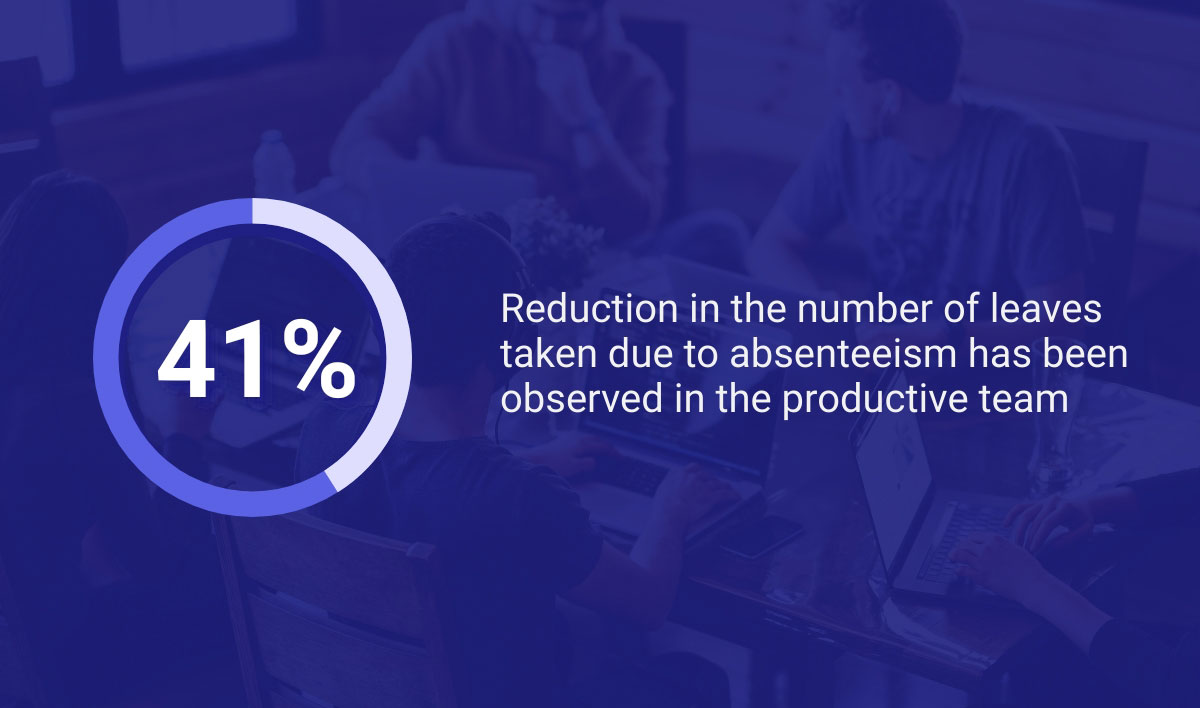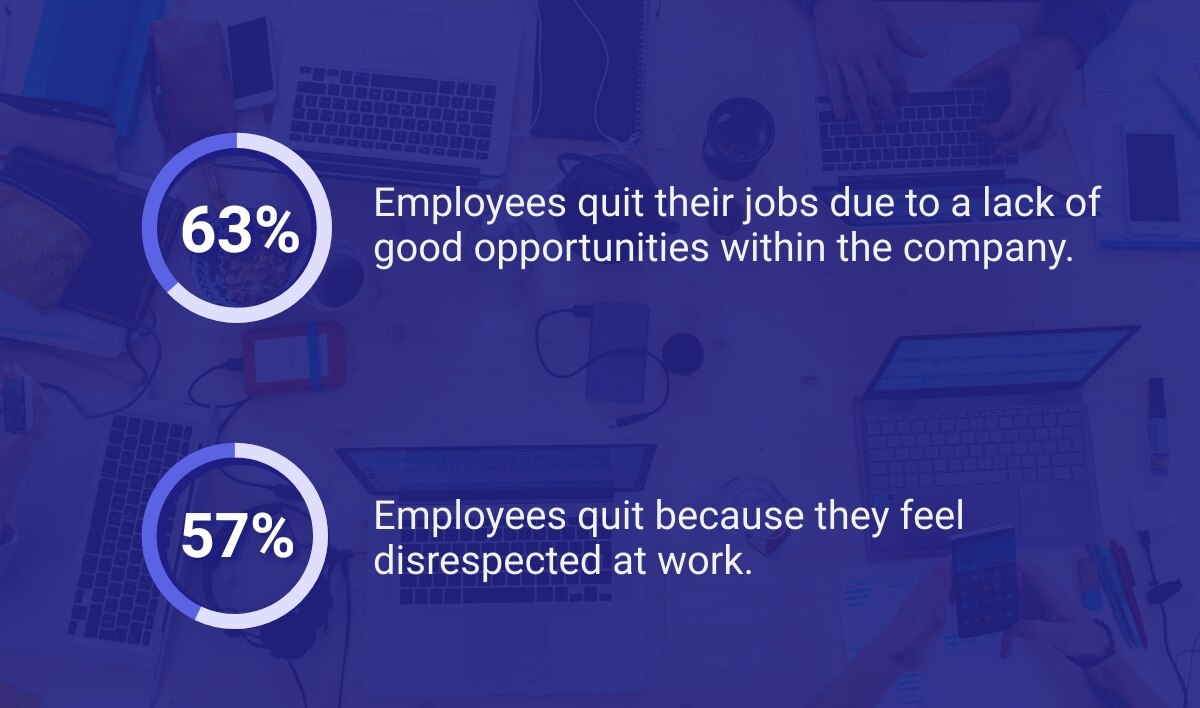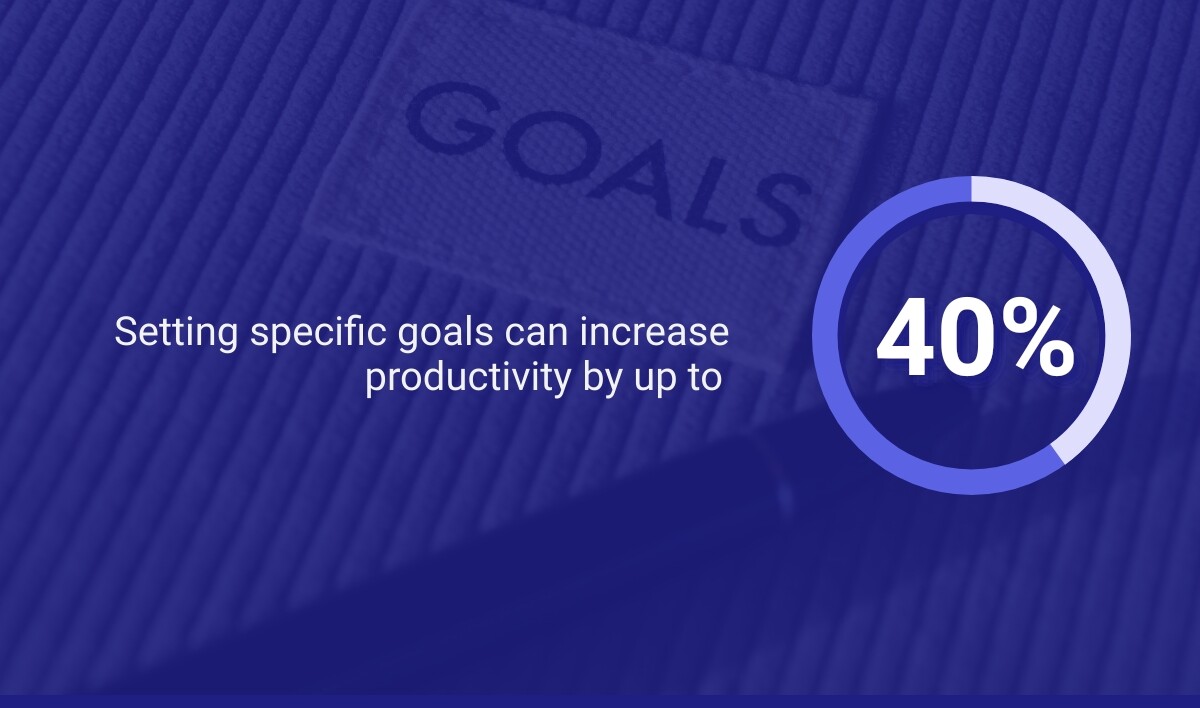Maximizing Employee Productivity: Proven Strategies for Success

Employee productivity is not about workers filling every minute of their workday staring at their computer screen, in meetings, or on calls. It is also not about assembly line-esque output, filling weekends with work, or biohacking to boost email sends before sunrise.
Even if work is getting “done” in those instances, we can assure you the employees are not truly productive in that context.
It is unrealistic to expect anyone in an office to be productive for all eight hours. However, daydreaming and taking frequent breaks can improve focus. In fact, if you are holding a marathon meeting in the same conference room with 10 people, you are doing more cognitive harm than good. So, it’s important to consider what fosters genuine workforce productivity.
Employee productivity moves companies forward. Productive employees achieve goals, keep customers happy, and boost the bottom line. Statistics show thatOpens in a new tab a productive team takes 41% lesser number of leaves due to absenteeism.

This article explains employee productivity, its importance, and ways to measure and manage it.
What is meant by employee productivity?
Employee productivity is an assessment of the value employees generate within a specific time period, which has a direct correlation with short-term and long-term business outcomes.
It is a result of engagement, expectations, and the environment. If employees are doing their work on time and are delivering high quality, chances are that they are engaged, have clear, realistic goals, and are in a supportive environment that provides coaching and feedback.
Productivity has a different meaning for each employee. The expectations and goals for an accountant look much different than those for a graphic designer, and so will their versions of productivity. Businesses must use the pillars of engagement, expectations, and environment to establish a base-level definition of what productivity means.
In general, a productive team collectively works towards meeting the company’s goals. Measuring the number of sales, goals met, quarterly profits, amount of work completed, and time spent on a project are some metrics to measure employee productivity.
Why is employee productivity important?
At the end of the day, you hope to get the best out of employees. When employees are learning, growing, and accomplishing great things, so are their companies.
Conversely, pushing employees without considering their wellbeing can lead to resentment and decimated productivity. Here are some of the reasons why employee productivity is important:
1. Increased efficiency
If you want to improve employee productivity, you first need to consider their work environment. Is it full of distractions? Everything from Slack messages to last-minute meetings pulls people away from their work, and settling back in to focus on a task takes time.
To increase employee productivity, take a look at what might be hindering their efficiency. Do they have all the tools they need? Are their project briefs clear? Are people getting back to them in a timely manner? Focused workers are more efficient, and efficiency drives productivity.
2. Improves overall profits
Motivated and productive employees have a direct impact on the company’s overall profits. Studies show that unmotivated employees can cost up to $550B a year, whereas motivated employees can help companies realize 27% higher profits.
These profits result from 38% higher productivity and 50% higher sales and customer loyalty levels.
3. Improved employee satisfaction
When a sense of fulfillment prevails throughout the company, you will see the compounded effects of a productive workforce. Morale and wellbeing improve, and soon, the long-term effects of a positive company culture start taking shape.
4. Helps identify the most valuable employees
When the employees are giving their 100% and playing on a level field, it is easy for companies to identify and reward the most productive and valuable ones. Doing so further boosts workforce productivity.
Employee recognition statistics show that employees who are rewarded are five times more likely to grow, 73% less likely to feel burned out, four times more actively engaged at work, and five times more connected to their workplace.
5. Creates healthier work relationships
Healthier personal and professional relationsOpens in a new tabat work are an outcome of transparency and authenticity, inspiring your peers, emotional intelligence, physical and mental self-care, and standing by one's values.
Lack of these can cause extreme stress, job insecurity, and an abusive environment, which have a direct impact on the company’s productivity.
6. Improves customer services
When employees feel productive, they are more fulfilled and have a strong sense of contribution to the company. And, as Tom Scholz of Boston reminds us, it is “More Than a Feeling.”
Take customer-facing employees, for example. When they feel supported and engaged, they deliver a better customer experience, thus increasing loyalty and continued business.
How do you measure employee productivity?
There is no equation to calculate employee productivity, but there are a few ways to measure an employee’s productivity:
1. Measure goals: Creating goals for employees lets them know what to aim for. It also gives a manager a clear target to measure progress. Ensure those goals are Specific, Measurable, Achievable, Relevant, and Time-bound (S.M.A.R.T.), and check in frequently to help employees clear any hurdles.
2. Measure the amount of work completed: One of the simplest visual representations of productivity is items employees cross off a checklist. If employees are churning through assignments and projects, it is a sign that they are feeling productive.
As a manager or peer, recognizing that hard work can go a long way in making sure employees feel appreciated for their productivity and motivated to perform.
3. Measure the quality of work: The quantity and quality of output need to be considered in tandem. You want to get the best out of employees, not the most. If employees are working through their checklist but skating by with the bare minimum, they could be overworked and unmotivated.
4. Measure the amount of work completed: Project management software helps managers track the amount of work completed daily, weekly, monthly, and quarterly basis. Delivery managers and product owners can also track the long-term progress over several months and years.
5. Qualitative methods:
- Daily standups: Daily standup meetings or catch-ups help employees and managers stay on top of their game. Everyone gives a quick update on their daily progress. This needs to be done correctly, though, or else it can feel like micromanagement. Managers can acknowledge and validate those who are up-to-date with their work and support those who are lagging.
- 360-degree feedback: This is a type of comprehensive feedback where people who work the most with an individual submit feedback for their manager to compile and deliver. This enables a more authentic review and empowers greater professional development, a driving factor for employee engagement.
- Self assessments: Employees can also rate themselves based on a number of factors. This helps managers understand where team members feel their strengths and weaknesses lie.
- Time versus results: Rather than the time employees spend on a workstation, measure the tasks they complete and the results. For example, metrics like the number of successful sales, effective customer call handlingOpens in a new tab, and the average time spent on each call can all signal high productivity.
- High employee churn: Research reports that 63% of employees quit their jobs due to a lack of good opportunities within the company, and 57% quit because they feel disrespected at work. By ensuring employee wellbeing, adequate work and growth opportunities, and peer support, businesses ensure lower churn rates and better workplace productivity.

6. Measuring profits: Businesses of every size use profits as a benchmark to gauge employee productivity. Employee performance is one but not the only reason for increasing profits. Rather than keeping an eye on each employee, businesses can measure the overall profits. If they are increasing, employee productivity is one of the many factors behind it.
How do you measure productivity in remote work?
Many managers wonder how they can know their employees are being productive if they can’t actually see them working. In reality, measuring productivity in the workplace isn’t all that different for onsite versus remote employees. In either context, start by identifying the top priority of each role. You can then measure what they’ve accomplished to that end to gauge productivity.
Of course, check-ins are another critical way to support employees and see how their work is going. When conducted regularly enough, these meetings can give you a good idea of an employee’s productivity levels.
Employee productivity formula
While there is no one way to measure productivity for highly quantitative roles, this formula can help assess levels:
For roles like sales and production, this formula can come in handy for a quick pulse check. Keep in mind that it doesn’t paint the full picture and you should still use feedback and other methods of analysis to gauge an individual’s overall productivity.
What factors affect employee productivity?
Company culture
A supportive, diverse culture goes a long way to support employee productivity. A workplace that lacks meaningful diversity, authentic recognition, and a generally positive disposition tend to have disengaged employees who feel dejected and unsupported by the environment around them. With employee recognition and DEI, workers feel like they can be their true selves and give their all to their work.
Employee wellbeing
Healthy employees tend to be more productive. For office workers, managing physical wellbeing at work can be a real challenge. Regular breaks for both physical activity and cognitive rejuvenation go a long way to boost engagement and focus, both of which directly support productivity.
Technology and tools
If employees don’t have the tools they need to do their job well, how can you expect them to be productive? Invest in the right tech and tools to set your teams up for success by asking what they need – they know best!
How should employers invest to maximize productivity
1. Foster a culture of recognition and appreciation
Facilitating a culture of appreciation can go a long way to improve employee productivity and build a strong work culture. In fact, fulfilling employee recognition makes employees up to 90% less likely to report being burned out at work “always” or “very often.”
For more information on how a culture of recognition can amplify the wellbeing of your employees, check out this Workhuman-Gallup report.
Encourage employees and managers to recognize one another often to show their appreciation for one another, celebrate milestones and achievements, and provide timely feedback. This helps acknowledge employee contributions and show people how valued they are.
2. Encourage physical and mental self-care
Businesses are realizing the importance of the good physical and mental health of their employees. Employees works work under stress are never productive and may take a higher number of sick leaves. As a result, many companies have team outings for physical health and in-house psychologists for mental self-care.
Encourage regular breaks throughout the day as well as consistently using PTO to disconnect completely and recharge.
3. Offer competitive compensation and benefits
Employees are more compelled to put forth their best effort when they feel they are being fairly compensated. Competitive salaries, incentives, and benefits show employees that they are valued and that the company cares about their overall wellbeing. Additional perks and incentives can further drive productivity as well.
4. Incentivize employees and appreciate achievements
Offering incentives such as gift cards or bonuses can enhance the productivity of employees who are already showing good performance. Appreciation could be in the form of managers acknowledging employees in team meetings or even giving handwritten notes of appreciation.
5. Improve workplace conditions
Provide comfortable working conditions and user-friendly/ergonomic devices to reduce any external stress on the employees. Small things like an uneasy chair, constant noise at the workplace, or a poorly designed keyboard can lower employee productivity. Ensure adequate lighting and clean drinking water at the workplace.
6. Encourage good communication
Transparent and clear communication is the key to success and to avoid any conflicts. A study shows that 72% of employees do not know or align with the company’s strategy and feel excluded and disconnected within the organization. Transparent communication shows employees that their organization trusts them and makes them feel more included in overall operations.
7. Invest in employee training and development
Well-designed employee training programs ensure that they know how to perform their job to maximize productivity. These programs set employees up for success so that they can jump in feet first after their onboarding.
But employee development shouldn’t end with onboarding. Continuing education opportunities are crucial to maintain a competitive, productive workforce.
8. Allow a flexible work schedule
With flexible schedules at work becoming normal, companies should adopt agile work hours and let employees choose when and where they want to work. Remote workers tend to achieve a better work/life balance, which increases the team’s productivity.
What factors affect employee productivity?
Employee productivity is a result of multiple factors that must work together so that every employee delivers the desired result. Some of the important factors that affect productivity are -
1. Poor communication - Teams depend on clear and efficient communication to meet goals. From agreeing on sales numbers to a software code, they constantly communicate over emails, internal messengers, and phone calls.
Teams also work in a hierarchy for approvals from managers and stakeholders. Poor or inefficient communication can waste everyone’s time and lower productivity.
2. No clarity of job roles - Can managers hold employees accountable if no one knows what they are responsible for? It is critical to have a tool that helps managers assign tasks and timelines for completion so that each employee knows what they are supposed to do.
3. No goal setting and tracking - Without specific and measurable goals, you are shooting in the dark and hoping for the best. Studies show that setting specific goals can increase productivity by up to 40%.

4. Workload imbalance - While inefficient workers overload themselves trying to do short bursts of work, efficient workers distribute their load and deliver consistent results over a longer period of time. Due to a lack of goals, employees can often feel workload imbalance, thus reducing their productivity.
5. Inefficient and uninspiring leadership - Good leaders do not simply give instructions. They give clarity and purpose, encourage inclusion and learning, and build trust among the employees. Inefficient and uninspiring leadership that only focuses on squeezing out the most work from their employees damages workplace efficiency.
6. Lack of necessary resources - To do their job well, employees need the right software, tools, procedure manuals, equipment, workspace, coaches, and in some situations, money. A lack of resources necessary to complete a job can produce sub-standard results.
Conclusion
Companies that display high productivity in the workplace understand that the key to it is employee well-being. They know that investing in incentives, training, access to the right tools, and physical and mental well-being are important factors for high employee productivity.
Employees who feel taken care of at the workplace tend to give their 100% at work, take fewer sick leaves and are inspired to contribute towards the growth of the company. The strategies we discussed help employees deliver results once they become a part of the work culture.
About the author
Mike Lovett
Mike is a senior content marketing specialist at Workhuman where he writes about the next era of the workplace. Outside the workplace, he’s an avid gardener, a frequent biker, a steadily improving chef, and a fantasy sports fanatic.